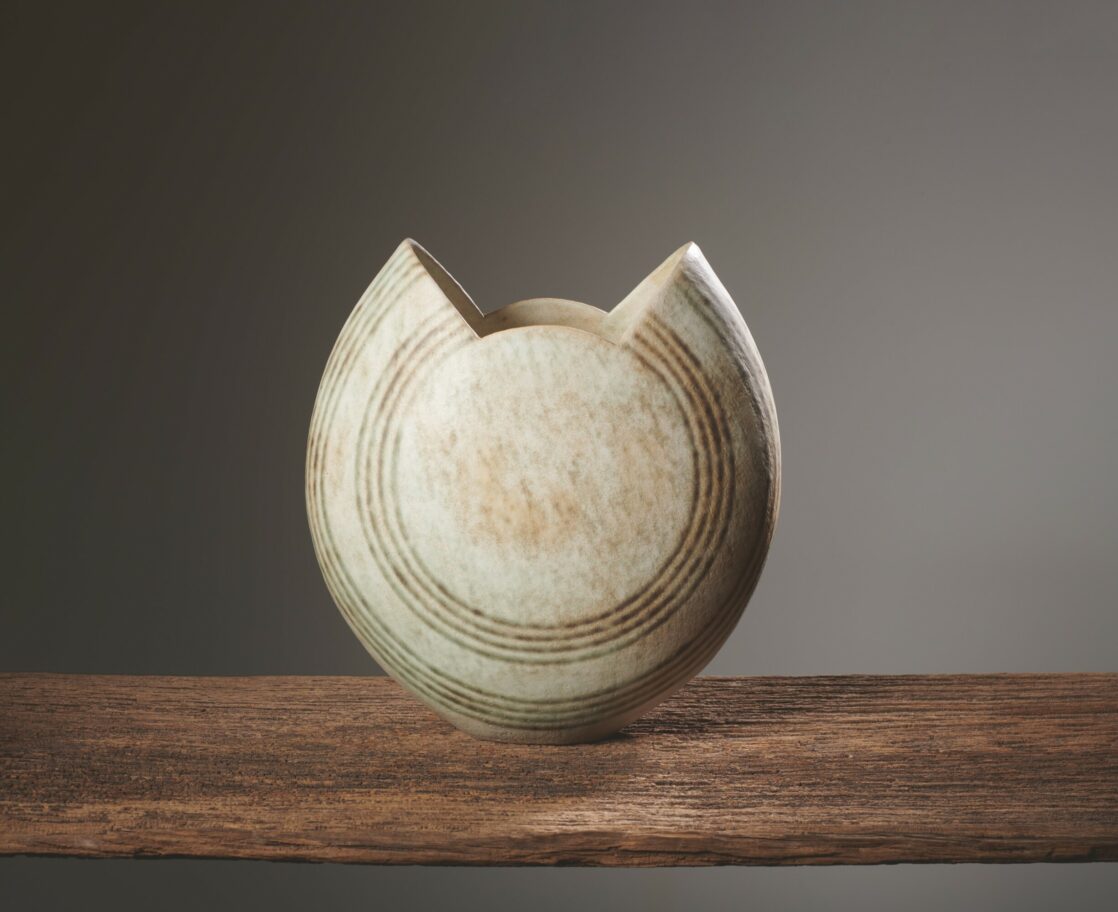Welcome to Ceramic Review
Ceramic Review is the magazine for contemporary and historical ceramics, ceramic art and pottery.
Ceramic Review Issue 330
November/December 2024
Ceramic Review is the magazine for contemporary and historical ceramics, ceramic art and pottery.
November/December 2024
John Ward is regarded as one of Britain’s most influential potters, yet very little has been written about his 50-year career – until now. Emma Crichton-Miller tells us more
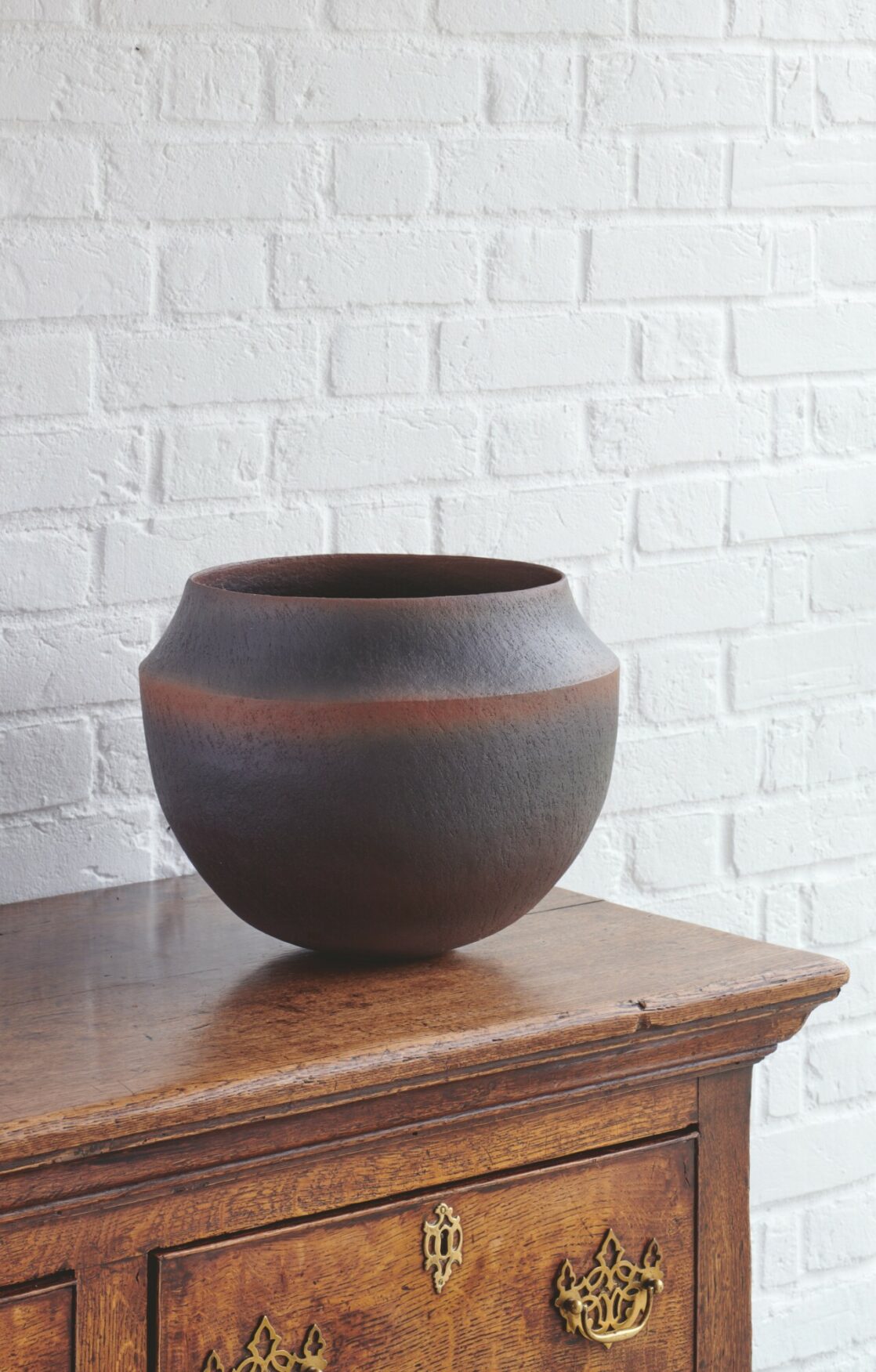
In December 2016, during the high-profile art fair Art Basel Miami Beach, the creative director of international luxury fashion brand Loewe, Jonathan Anderson, mounted an exhibition of paintings and pots in the brand’s flagship Miami store. Titled Chance Encounters II, the paintings were by Northern Irish artist William McKeown and the pots were by John Ward.
While McKeown, who died in 2011, had represented Northern Ireland in the 2005 Venice Biennale, Ward, born in 1938, was at that point little known outside a circle of enthusiastic collectors. It was an inspired pairing. Both artists share an intense engagement with the natural environment and larger cosmos, which is reflected in highly distilled, poised work. Abstraction – from figuration and function – is key for both. At the time, Anderson commented about his inclusion of Ward’s work: ‘I felt he was not recognised, and his contribution to contemporary ceramics is huge. This was a really good platform to do something with him.’
When I set out to write a book about Ward, it was in an effort to understand and appropriately calibrate that contribution. I had loved his pots for many years, and yet I had rarely read a satisfactory account of his career or his particular approach to materials or techniques, or indeed a critical explanation of his work’s appeal. This is partly because since 1979, Ward has lived in the far north west corner of Pembrokeshire in Wales, tucked into the side of the Preseli Hills a short distance from the sea.
Rarely travelling, he has sold consistently through a small group of galleries to persistent admirers, never needing particularly to draw attention to his work to sell it. But another reason for Ward’s low profile is that ever since he first discovered his distinctive method of handbuilding and the matte glazes he prefers, learnt while studying at Camberwell School of Art and Crafts, he has consistently sought expression through a highly personal vocabulary of single vessel forms. He has worked in isolation from ongoing debates and developments in the mainstream of ceramic art and craft, instead evolving a parallel practice with its own history and terms of reference.
Particularly known today for his striking black and white vessels and his evocative large-shouldered vessels, whether glazed in black or decorated with white glaze and sea-green rings, he has rarely repeated himself, instead continuously revisiting similar forms, patterns and colours. Each pot is a fresh answer to the infinite challenge of creating significant form.
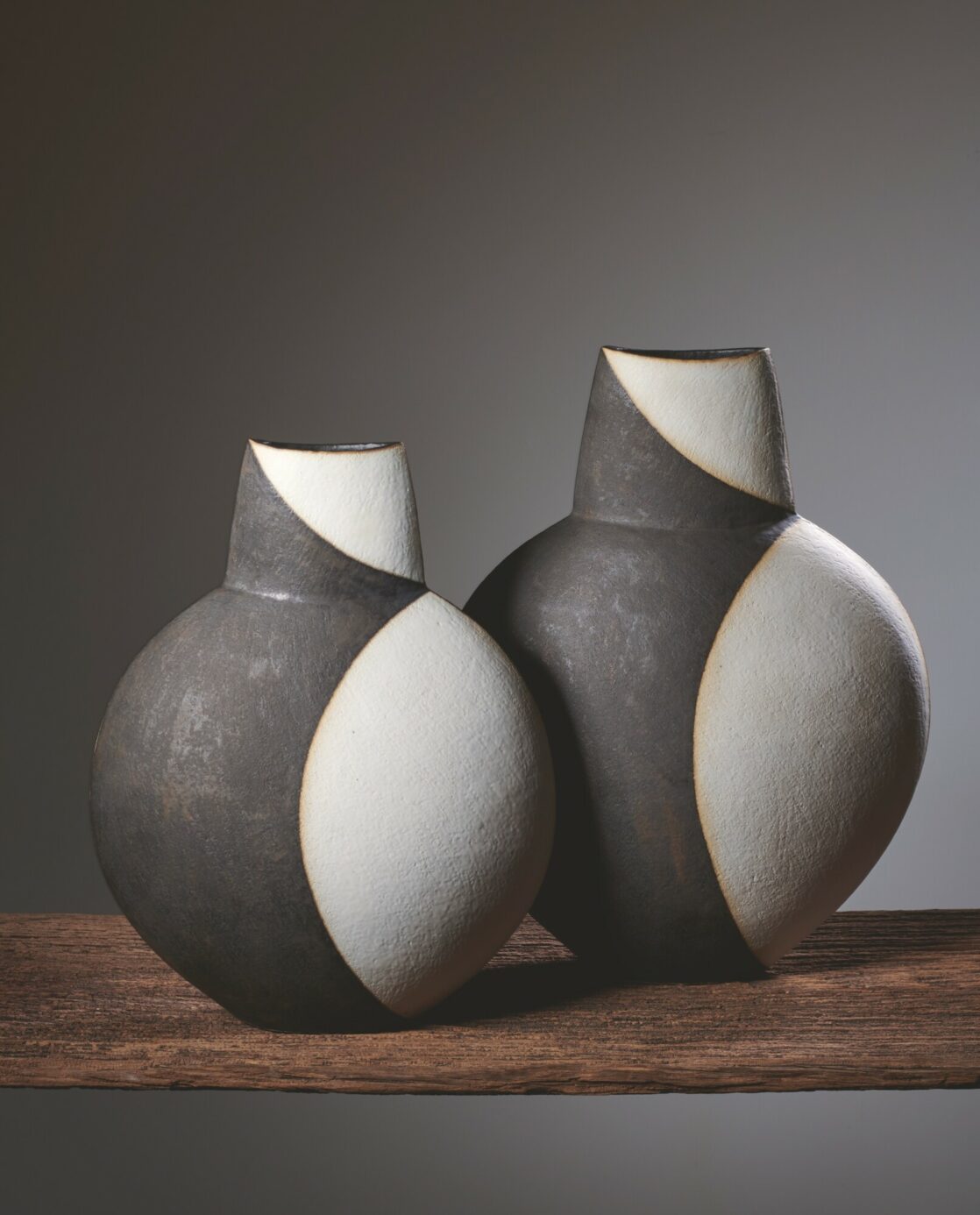
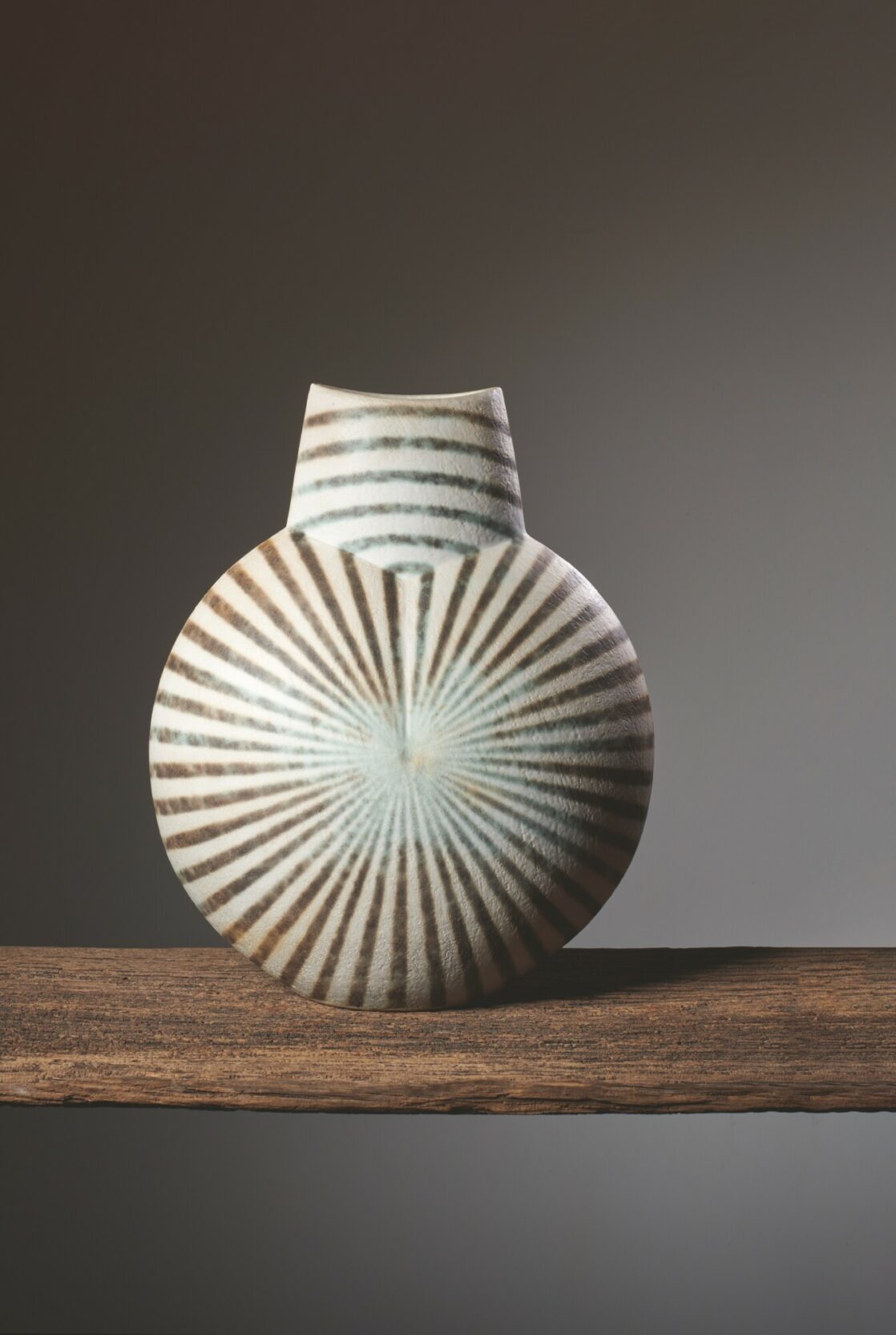
EARLY INFLUENCES
Ward came to ceramics relatively late. After school and National Service, he explored a variety of careers, before settling into a job as a BBC cameraman. The shift work offered an opportunity for him to take evening classes in pottery. But at a certain point the lure of clay began to overcome all other ambitions.
Ward chose to go to Camberwell art school because he knew that Lucie Rie and Hans Coper were tutors there. Ward has written: ‘Hans Coper’s pots seemed to encompass the ancient and the modern, timeless and monumental. Lucie Rie’s work, which I first saw in a sunlit exhibition room, glowed with its light, life and colour.’
Although he had little contact with Rie or Coper, and indeed chose to handbuild his vessels rather than wheel-throw them, as they predominantly did, their ethos was inspiring. Determinedly going his own way, one of Ward’s early innovations was the use of flat coils – a technique not used or taught at Camberwell. He remembers: ‘One or two [people] were using round coils and pinching them out on the pot, but I suddenly thought, I don’t like this business of putting coils on top and then smoothing them out. I would rather have something that was contributing to the shape in a different way and that I could control more.’
So, Ward began to make wide curved strips, on top of a pinched base. As he puts it: ‘I was ending up with the big pots having these long wide strips of clay, which then didn’t need too much shaping on the pot.’
Near contemporary of Ewen Henderson at Camberwell, another handbuilder, Ward was also impressed by one of the young visiting tutors – the exuberant, audacious young potter Ian Godfrey. Other key influences were the ancient Egyptian, Near Eastern and ancient Mediterranean pots in the British Museum – evident in the timeless, almost otherworldly purity of his forms and their burnished matte surfaces.
It was at Camberwell that he established his primary armoury of techniques – and learnt, at his graduation show, from the enthusiastic response of gallerists that there was a future for his work. This was confirmed when, in 1974, one of his graduation pieces was given as a leaving present to the departing head of the school, Richard Kendall.
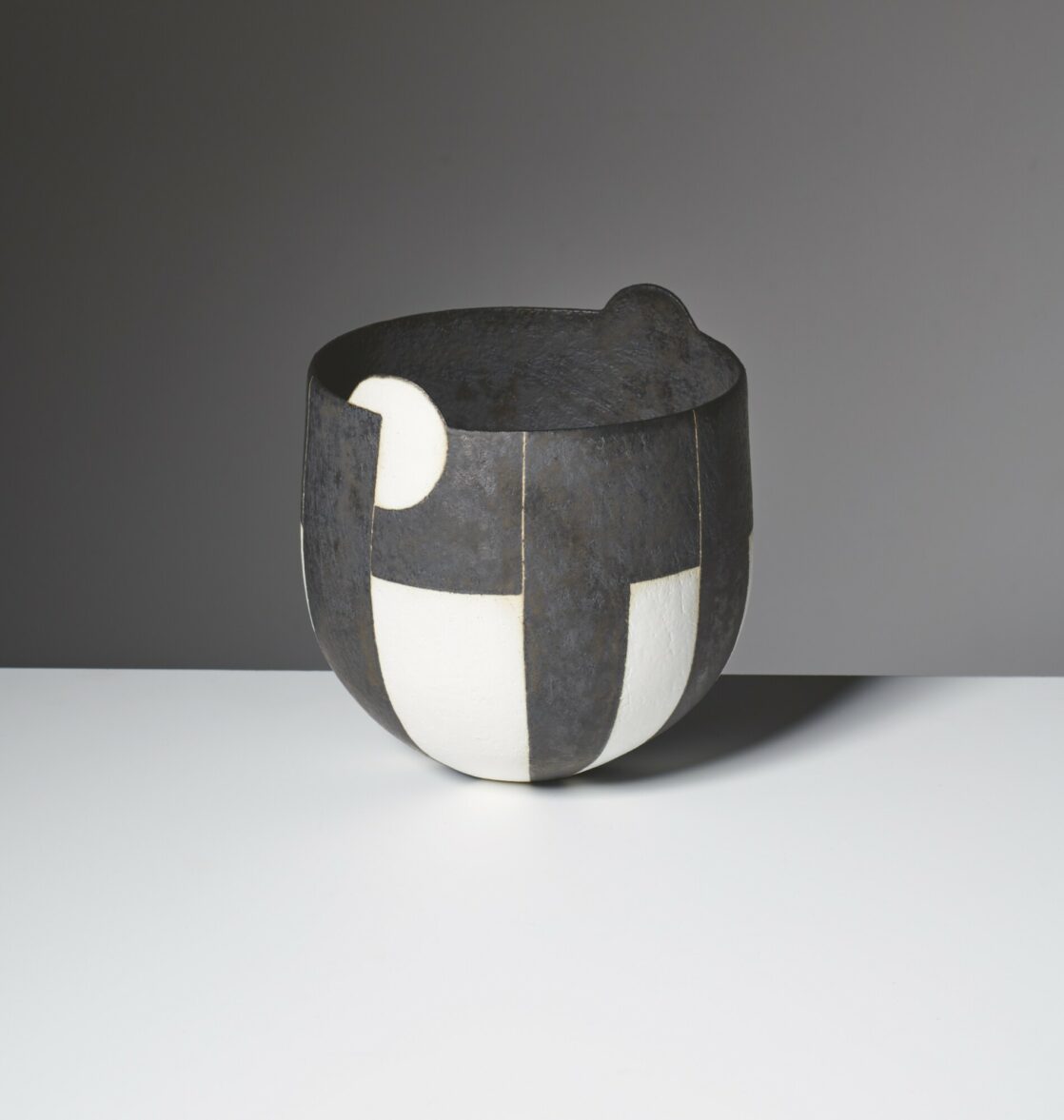
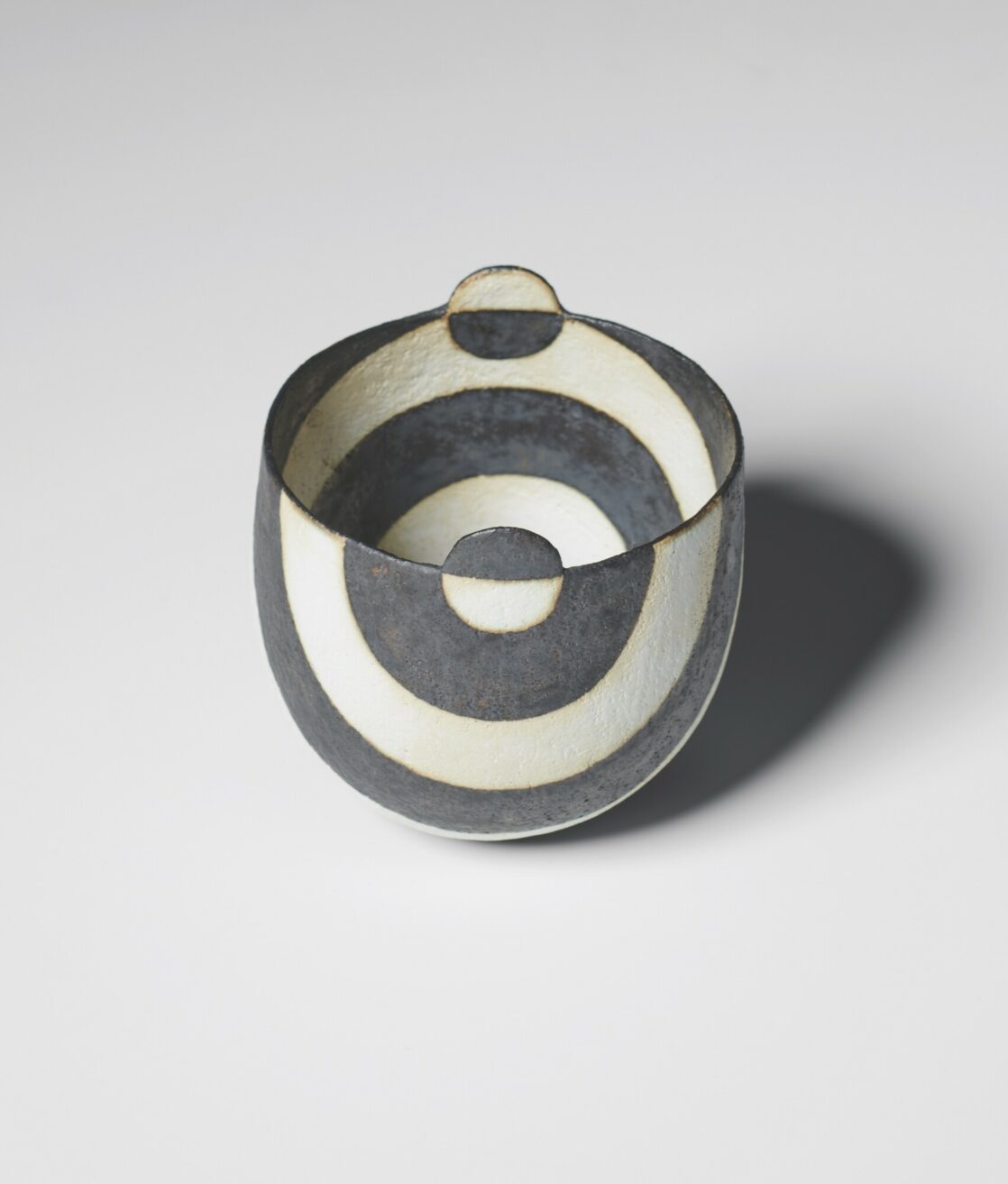
Already Ward was clear that his work would steer a path between functional wares and ceramic sculpture. Just as Hans Coper had always insisted he was a potter, however sculptural his vessels grew, Ward explains: ‘I make pots that can be used but with no prescribed function. This gives me a freedom to explore a wider variety of hollow forms, but I would still describe myself as a potter rather than a sculptor, with a strong connection to the design world and also to architecture.’
The focus simultaneously on the interior space of a vessel, as well as on its impact on the surrounding space, is one aspect of his work’s power. Ward’s pots are never just about surface and form, they play constantly with volume and line.
NATURAL SURROUNDINGS
During the early years of his career and marriage, to fellow Camberwell student Philippa, the couple were based in London and Ward supplemented his income with teaching. But in 1979, they moved as a family to Pembrokeshire. While there was no discernible break in the onward evolution of his forms and glazes, Ward acknowledges that the surrounding landscapes of striated sea cliffs, mountain and moorland, dotted with prehistoric remains, burial cairns and Iron Age hill forts, have had a definite, if hard to define, impact upon his work.
It is there in the concentric bands of blue-green glaze that evoke ripples of water over sand, or the black and white patterns inspired by sunlight pouring through his studio window, creating a play of light and dark, or even in the body of work made with an ochre glaze that took Ward years to perfect. ‘You are making things with glazes that echo the colours of your natural surroundings – the stones on the beach, or on the hills, that look the same colour as the pots,’ he explains. ‘Essentially, they are both made of the same materials, treated in different ways. For many of the stones have elements in them that have gone through fire and heat, they were created in exploding stars, and yet now again we are using these elements in another way in a hot kiln.’
Ward continued making pots in this rural context until very recently. They stretch across his life in a discernible continuity, but one that invokes also much larger time frames – of our planet and the cosmos. And today, of course, Ward’s work is much better known, with his pots selling at auction for consistently high prices. However, I am not sure for all my research that I have quite pinned down the elusive beauty of his vessels and how they quietly but confidently draw your eye within a room, holding both space and time momentarily in suspense.
Emma Crichton-Miller, The Pottery of John Ward, £35, Lund Humphries; lundhumphries.com
Images: courtesy of the artist; Lund Humphries; © Sylvain Deleu
